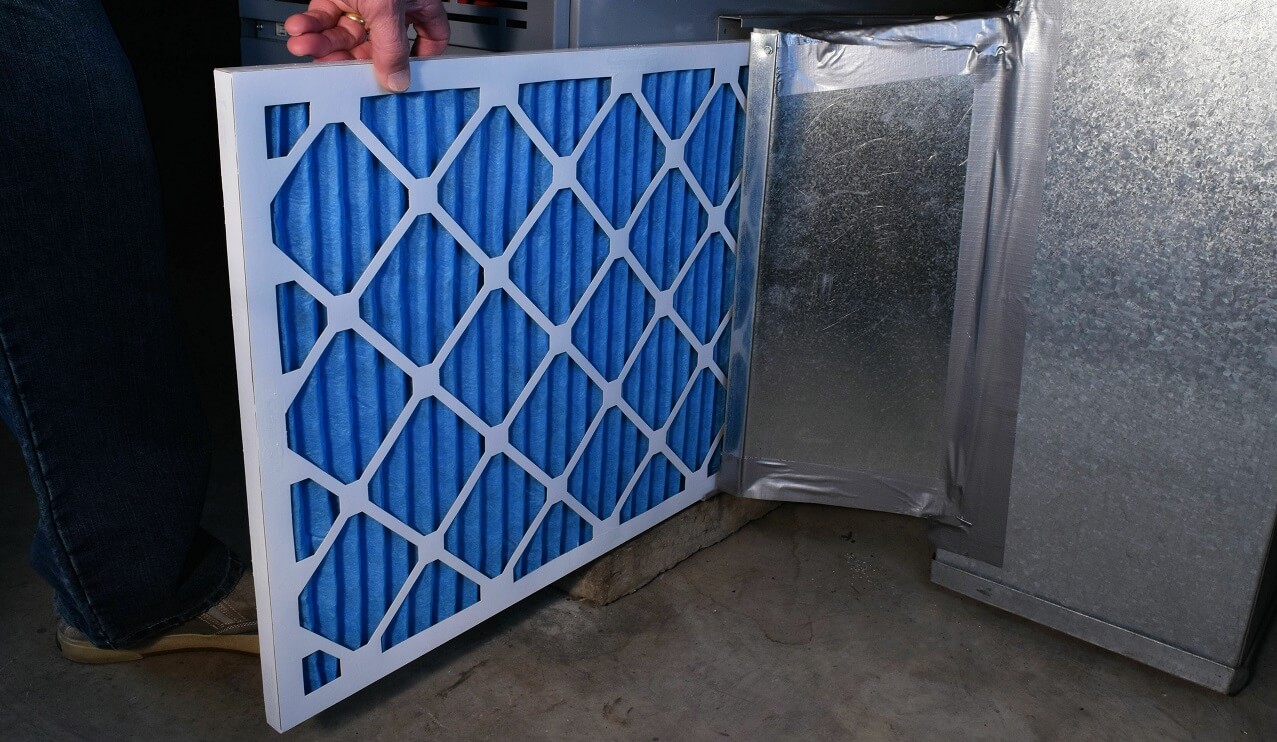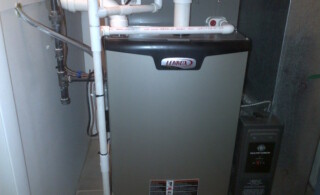
Furnace filters not only screen out unwanted pollens and debris from your heating furnace and air conditioning systems (HVAC systems), but they also increase the system’s productivity. By replacing them often, your air stays clean and healthy against allergens and other forms of bacteria that can be harmful to your lungs.
Plus, fresh replacements keep the HVAC system running correctly by prolong its lifespan and reducing your utility bills by keeping it properly maintained. You should inspect them monthly (especially during heating or cooling season when your system is being used continuously) to see if they need cleaning or replacement. If they’re not swapped routinely, then your system will have to work extra hard, reducing performance and increasing cost.
How to Clean or Replace
First, turn off the HVAC system and locate the service panel. Many of these panels can be removed by hand though you may need a screwdriver in some particular cases. Locate the furnace air filter near the intake-outtake blower, and check its dust level: Is it hard to see through? If you have a reusable model, then simply rinse away the dust particles in your sink or in your driveway with a hose; then wait for it to dry and put it back in place. If they’re disposable, write down what size the unit takes, throw the dirty one away, buy and replace with a fresh product, and then turn your system back on.
Types of Furnace Filters
Furnace filters can either be disposable (with cardboard frames) or permanent (with fiberglass or metal framing). Disposable models are much cheaper, but require monthly replacement, therefore it is best to have several on hand in order to save you time throughout the year. Permanent brands are more cost-effective due to their reusability but require more work because of the routine cleaning. All furnace air filters come with a MERV (Minimum Efficiency Report Value) Rating. This reports the product’s capability in trapping particles and helps you compare the performance of different brands: the higher the MERV rating, the more productive the filtration. Here are few different products out there, each with their own pros and cons:
- Mechanical: Any dry?media product which simply captures unwanted components in its meshing. This includes any disposable model made out of manmade or natural fibers. These are not as effective for smaller particles, but are very effective if you don’t have any severe allergies. Also, they’re less expensive but have to be changed once a month.
- Electrostatic: Consists of polyester strands which become electrically charged as air flows through them. This static electricity attracts dust and pollens to the filter with slightly higher MERV rating than mechanical models. Most of these are bound to a metal frame and will not need replacing. They can often be used up to three months without cleaning.
- Electronic: An untraditional “filter” which doesn’t have actual fibers or media to attract the debris. Rather, they have a grid of electrically charged wires that attract debris, but they are so efficient that within a few days their MERV rating may plummet due to excess dust buildup. Therefore, they have to be cleaned weekly.
- HEPA (High Efficiency Particle Absorber): The most efficient of all furnace air filters. It has no MERV rating because it actually exceeds its requirements and has a 99% efficiency testing. However, they are more expensive. Plus, due to its high-standard certification, there tend to be many imitation brands out there that may not be true HEPA products. Because of their valuable productivity, many of these products tend to only be used in high-sanitary environments, such as hospitals, laboratories, and surgical facilities and therefore they often aren’t found in residential homes.
 Baseboard Heating Options & Benefits
Baseboard Heating Options & Benefits  Forced Air Heating Systems – How They Work & Options
Forced Air Heating Systems – How They Work & Options  Consider Wood-Burning Furnaces
Consider Wood-Burning Furnaces  Outdoor Heaters: a Refuge from the Cold
Outdoor Heaters: a Refuge from the Cold  Warm up with a Garage Heater
Warm up with a Garage Heater 

Are You Familiar With This Topic? Share Your Experience.